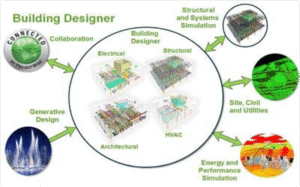In complex engineering projects—especially in sectors like Oil & Gas, Power, Petrochemical, and Infrastructure—seamless collaboration across multiple engineering disciplines is crucial for success. This blog delves into the concept of Interdisciplinary Coordination, its importance, planning, management, and strategies to improve cross-discipline collaboration.

✅ What is Interdisciplinary Coordination?
Interdisciplinary coordination refers to the structured communication and collaboration between various engineering disciplines involved in a project. It ensures that engineering teams share and receive critical information at the right time, avoiding delays, rework, or technical conflicts.
The Engineering Manager is typically responsible for identifying and managing these interface points, while individual discipline leads are responsible for timely contribution and resolution of interface issues.
Disciplines usually involved include:
-
Process
-
Piping
-
Mechanical
-
Civil/Structural
-
Electrical
-
Instrumentation, Control/Automation & Telecom
-
HVAC
🔍 Need for Interdisciplinary Interface
Without proper interdisciplinary interaction, engineering activities can become fragmented. Here’s why it’s essential:
-
A weakness or delay in one discipline directly affects others.
-
Delays in document submission or incomplete deliverables can impact the overall project quality and schedule.
-
Uncoordinated efforts lead to:
-
Schedule slippage
-
Rework and errors
-
Increased cost
-
Compromised quality
-

📘 Project Execution Plan and Interface Management
A successful project execution begins with a well-defined workflow. Each engineering discipline must understand:
-
What input they need from others
-
When they will receive it
-
How their output will affect others
Key points:
-
The type and timing of each interface must be part of the Project Execution Plan.
-
Misunderstanding or ignorance of workflows leads to rework, schedule delays, and cost overruns.
🧩 Interface Engineering: Understanding Types of Interfaces
There are two primary types of engineering interfaces:
1. Indirect Interface
Deliverables are passed between disciplines without formal checking—based on assumption and trust.
2. Direct Interface
Deliverables go through Squad Checks (interdisciplinary review) before being considered official. These are formal checks where disciplines cross-review and sign off on each other’s inputs/outputs.
Tools for Interface Management:
-
DCI – Document Control Index
-
DDM – Document Distribution Matrix
-
Vendor document reviews
🔗 Interface Management Across Disciplines
Let’s explore how electrical engineering interfaces with other disciplines:
🔹 Process to Electrical
-
Motor drive requirements
-
Load data for equipment
-
Emergency power needs
-
Control philosophy & signal interface
-
Heat tracing demands
🔹 Mechanical to Electrical
-
Suitability checks for motors
-
Hazardous area classification
-
Earthing, cathodic protection
-
Lightning protection based on equipment size
🔹 Electrical to Mechanical
-
Review of vendor drawings for mechanical packages
-
Interface with packaged units
🔹 Piping to Electrical
-
Plot plan and elevation for cable routing
-
Heat tracing requirements
-
Clash checks using 3D modeling (PDS/PDMS)
🔹 Civil/Structural to Electrical
-
Building layout for panels and ducts
-
Transformer foundations
-
Embedded conduits and earthing
🔹 Instrumentation & Control to Electrical
-
Load data for instruments and MOVs
-
DCS and ESD interface
-
UPS and emergency power requirements
🔹 Telecom to Electrical
-
Telecom load & routing
-
Instrument selection based on hazardous classification
🔹 HVAC to Electrical
-
Heat load for electrical panels
-
Power and control requirements
-
MCC and equipment interface
🛠 Electrical Interfaces with the Project Team
| Project Data | Interface Flow | Electrical Deliverables |
|---|---|---|
| Site Data & Utilities | Input | Electrical Design Basis, SLD |
| Equipment List | Output | Load List |
| Document Index | Shared | Electrical DCI |
| Weekly Progress | Input | Project Control Docs |
| Vendor/Agency Coordination | Interactive | Reviews, Inspections |
🚀 How to Improve Interface Management
To make interdisciplinary coordination more effective, consider the following:
-
Workflow Chart
-
Establish a clear work process in the Project Execution Plan.
-
Every discipline must follow the chart during document preparation and review.
-
-
Interdisciplinary Deliverables
-
Identify inter-discipline deliverables early in the project.
-
Conduct IDC (Inter-Disciplinary Check) or Squad Checks thoroughly.
-
-
Regular Interface Meetings
-
Weekly or bi-weekly meetings to discuss and resolve interface issues.
-
Promotes transparency and proactive problem-solving.
-
-
Team Awareness
-
Each team must understand how their work impacts others.
-
Encourage early communication rather than waiting for inputs.
-
-
Interface Register
-
Maintain a log of all interface issues and assign a responsible interface manager.
-
Helps track the status and accountability of interface tasks.
-
-
Documentation & Communication
-
Use templates for squad checks.
-
Maintain clear records: notes of meetings, memos, and emails.
-
🔚 Final Thoughts
In conclusion, interdisciplinary coordination is not optional—it’s inevitable. Strong interface management:
-
Resolves discrepancies before construction
-
Prevents clashes in design and execution
-
Saves time and cost
-
Improves overall project quality
By institutionalizing a culture of collaboration, setting clear interface points, and using proper documentation tools, engineering teams can execute complex projects more efficiently and harmoniously.
Remember: The success of any multidisciplinary project lies in how well the teams interface with each other. Engineering may be technical—but its success depends on communication.

